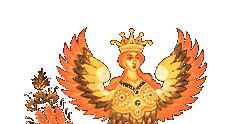Nikolay Andreevich Rimsky Korsakov (1844-1908), better know to classical music enthusiasts as simply Rimsky Korsakov is one of Russia's most well-known composers. He was born in 1844 in the town of Tikhvine and was educated in Moscow. One of the first and most influential masters who shaped the young composer was M.A. Balakirev. Balakirev was one of the first people to hear Korsakov's first symphonies, and it was performed later that year in the musical auditorium at the Duma (Russian version of the senate), which was a smashing success. "Sadko," soon followed as well as "Serbian Fantasy." "Sadko" was very unique in the way Korsakov presented the orchestra with music based in fantasy that revealed his talent in manipulating the entire symphony to his liking. His opera "The Lady from Pskov,"based on a text by May was brought to the stage in 1873. Then 25 years later he added a prologue to that opera called "Boyarina Vera Sheloga."
He acquired a professorship in 1871 in the St. Petersburg conservatory. He taught special theory in musical composition. From 1873 to 1883 he was the inspector of musical choirs in the naval department. He also worked at a free musical school, at which he was choir director from 1874-1880. Then from 1883-1893 he was an assistant to the director of the palace singing ensemble. During these busy, busy years he was still able to develop a broad knowledge of composing music from opera, to symphony, to chamber music, and then later religious music.
At the Mariinski Theater his, "May Night," appeared to audiences in 1880, while in 1882, "The Snowmaiden," was staged. "The Snowmaiden," was so lyrical with a blend of pure Russian spirit that it was embraced by the entire country. "Mlada" 1892 and "Christmas Eve" (1895) were not as popular and were quickly taken off the Mariinki stage. 1897 was the year he finished "Sadko" which was a culmination of everything he had learned about composing music and stage up to that point. It was put on stage at a private Moscow theater, where it had tremendous success. Then in 1898 its success was repeated in St. Petersburg.
He wrote an opera (one of his shortest) based on Pushkin's text "Mozart and Salieri" that played in Moscow in 1898 and in Petersburg in 1899. While "Sadko," and "Mozart and Salieri," were enjoying great success he wrote, "Tsarskaya Nevesta," which was no less spectacular than his best work up to this point in his career.
Other works by Korsakov that deserve attention are "Antar," "Sheherazad," "Ispankoye Kaprichiyo," and "Voskresnoye Yvertyura." He was also writing music for quartets, sextets, violin music, a cappela choir music, was compiling Russian folk songs and religious choir music. He worked on remaking and reorchestrating Mussorgsky's "Boris Godunov" and a few other compositions left by the late composer. He also helped in finishing the opera "Duke Igor," by Borodina and the orchestration of "The Stone Guest," by Dargomizhkovo.
He wrote an opera for Pushkin's tale, "Tale of Tsar Saltan," May's "Serviliya," "Koshcei the Deathless," a folk tale, and the "Tale of Peotr and Fevronia."
His numerous pupils included A.K. Glazunov, A.K. Lyadov, N.Ya. Myaskovski, and A.A. Spendiarov. In his home town of Tikhvine a house-museum for the legend was opened up in 1944, 36 years after his death.
|




